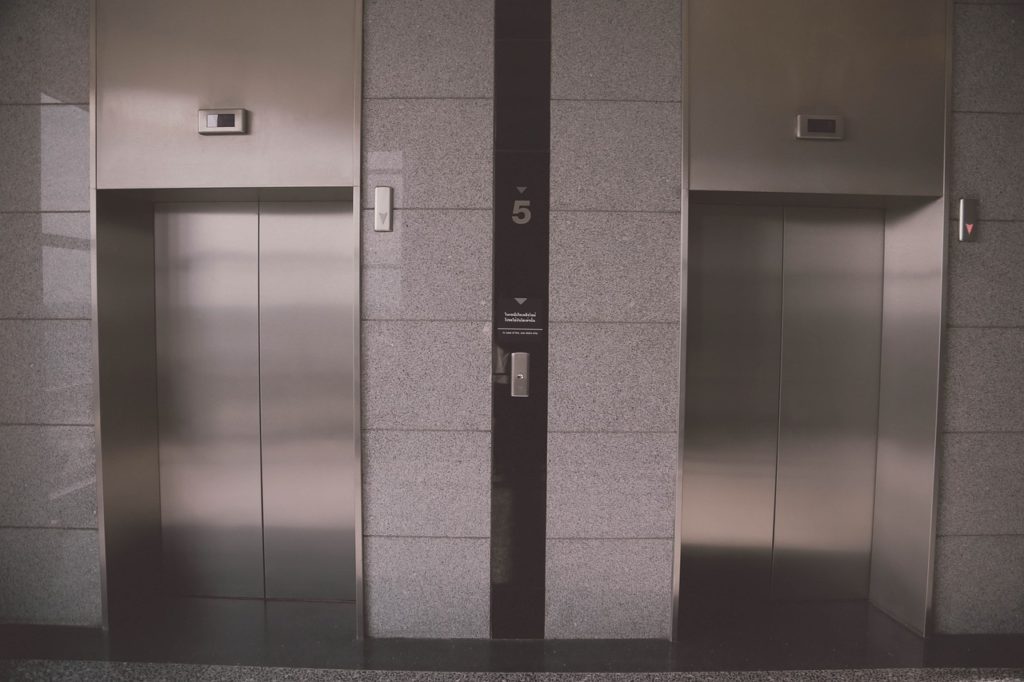You’ve probably never wondered how many elevators there are in the state of Ohio, but the answer is “more than 34,000.” That’s a lot of equipment to maintain, especially when you consider that just 65 inspectors at the Ohio Department of Commerce Industrial Compliance Division are responsible for overseeing all of them. That’s more than 500 elevators per inspector.

Last year, the Ohio House of Representatives passed a bill that would have strengthened elevator safety requirements and created a state Elevator Safety Review Board. The National Elevator Industry, Inc. (NEII), the leading trade organization for elevator manufacturers, installers, supported the bill, with a focus on how licensing requirements would increase safety. Many industry professionals also supported the bill, including a representative of The Murphy Elevator Company, Rich Hendrickson. Hendrickson said that in the five-state area he oversaw, every state except Ohio already had a similar law on the books. But, thus far, the bill hasn’t become law.
Ironically, North Carolina recently passed an elevator safety bill named after Weston Androw, a 7-year-old Canton, Ohio resident who died when he got trapped between an elevator car and shaft while on vacation in North Carolina.
Elevator Statistics
Most of us don’t give much thought to elevators–even if we automatically step into one every morning when we arrive at work or every evening when we return to our apartment buildings. They’re an annoyance when they’re out or slow, but otherwise part of the background. That’s partly because elevators are ubiquitous in modern life in the United States.
NEII says people in the U.S. take about 283 billion elevator rides each year. And, those trips add up to more than 2.8 billion miles each year. With so much elevator traffic, it’s not surprising that accidents happen. But, like most other types of injuries, most elevator injuries and fatalities could be avoided.
Elevator-Related Injuries and Deaths
Fatal Elevator Injuries
Elevator-related deaths are relatively rare when you consider the large number of elevator trips each year. Still, about 25 people die in elevator accidents each year. Those fatalities are split about evenly between people who are working on elevators and elevator passengers. About 60% of those killed are working on or around elevators. These include elevator installers, maintenance and repair workers, engineers, and others. Most fatal elevator injuries among those working on or around elevators are attributable to falls. Other accident types include:
- Caught in/between incidents, often involving getting caught in the elevator doors
- Struck by an object, most often the elevator itself
- Elevator collapses
These fatalities most often impact workers who are installing or repairing an elevator or working in the elevator shaft or car. But, a significant number were construction workers who were not working on the elevator, but were working close by. Nearly half of this type of fatal injury occurred when the worker fell into an unguarded or inadequately guarded elevator shaft.
About 10 of those killed in elevator accidents each year are passengers on the elevator. These are split about equally between people who are riding the elevator while at work–such as a janitor moving from floor to floor–and passengers not at work.
Interestingly, all of the non-work-related elevator deaths across the 14-year period assessed in the study above occurred in just 23 states. 6.6% of those fatalities happened in Ohio.
Non-Fatal Elevator Injuries
Estimates of the total number of non-fatal elevator injuries in the U.S. each year vary, but there is general agreement that these injuries number in the several thousands. But, that doesn’t mean stepping on an elevator is high-risk. Several years ago, the Consumer Product Safety Commission concluded that the injury rate was about .015 accidents per elevator each year. That means, on average, 98.5% of elevators will go the full year without an accident.
One study that looked specifically at injuries among older adults concluded that, on average, more than 2,500 people aged 65 and older suffer non-fatal elevator-related injuries each year.
Who Can Sue for an Elevator Fatality or Injury?
Whether the victim of an elevator injury or surviving family members of someone killed in an elevator accident can file a lawsuit depends on a variety of factors, including:
- Was the person who was injured or killed working at the time of the injury?
- Was the elevator or one of its component parts defective?
- Was the building owner/manager negligent in maintaining the elevator?
- Was a construction contractor or someone else negligent in securing or properly marking an open elevator shaft?
If the injured person was working at the time of the injury, they will typically be entitled to workers’ compensation benefits. Ohio workers’ compensation is an exclusive remedy, which means that an injured worker generally can’t sue their employer for negligence. While workers’ compensation covers medical care associated with an on-the-job injury and provides partial replacement income, it does not cover all of the types of damages that might be available in a personal injury lawsuit.
In that situation, it may be in the victim’s best interest to explore other possible responsible parties. For example, if the injury occurred because the elevator or a part was defective, the victim or surviving family may have a product liability claim against the manufacturer. This type of claim is separate from and won’t impact workers’ compensation benefits, though you typically can’t recover twice for the same damages.
If the elevator injury wasn’t sustained on the job, there’s no no-fault compensation program like there is for injured workers. But, the injured person or the family of someone killed in an elevator accident outside the employment setting may have more options for a lawsuit. For example, if the owner of a building under construction or an elevator construction contractor left an open elevator shaft unmarked and unprotected, someone who falls into that shaft as a result will likely have a negligence claim against them. And, the possibility of a product liability claim is similar to that described above for those injured on the job.
Challenges of Elevator Accident Claims
Proving liability in an elevator injury case can be challenging. In many elevator accident cases, the cause of the injury is a technical failure that will require expert witnesses to assess and present. If you’re pursuing a claim for negligent maintenance, negligent operation, or product defects, this complex technical information will play a key role in your case.
Where the claim is based on a different type of negligence, such as failure to sufficiently secure the area when an elevator is under construction and there are hazards like an open shaft, you may need an expert witness to present the industry standard for such precautions, and to explain how that standard was breached. This can be even more complicated when construction was underway at the time of the injury, since multiple contractors may have been working in and around the elevator, and it may be unclear who had responsibility for securing the area.
That means unless there is serious injury or death, the costs associated with building an elevator injury case usually make it impractical to file a personal injury or product liability lawsuit–someone with relatively small damages could win this type of case and still end up losing money.
Talk to an Elevator Accident Attorney
The bottom line is that people injured in Ohio elevator accidents and those who have lost loved ones may be entitled to compensation from workers’ compensation, from the manufacturer of the elevator, from someone who negligently maintained the elevator, from a construction crew that created a dangerous setting for those passing through the building, or another responsible party.
Overlooking one of these possible responsible parties or failing to coordinate claims properly can reduce the compensation available. If you’ve been seriously injured in an elevator accident or lost a loved one, it’s important to work with a law firm that has experience with all types of claims that may be available to you. The first step is to schedule a free consultation with one of the veteran injury lawyers at Plevin & Gallucci. Call 1-855-4PLEVIN right now to get started. Or, if you prefer, fill out the contact form on this page and we’ll reach out to you.

